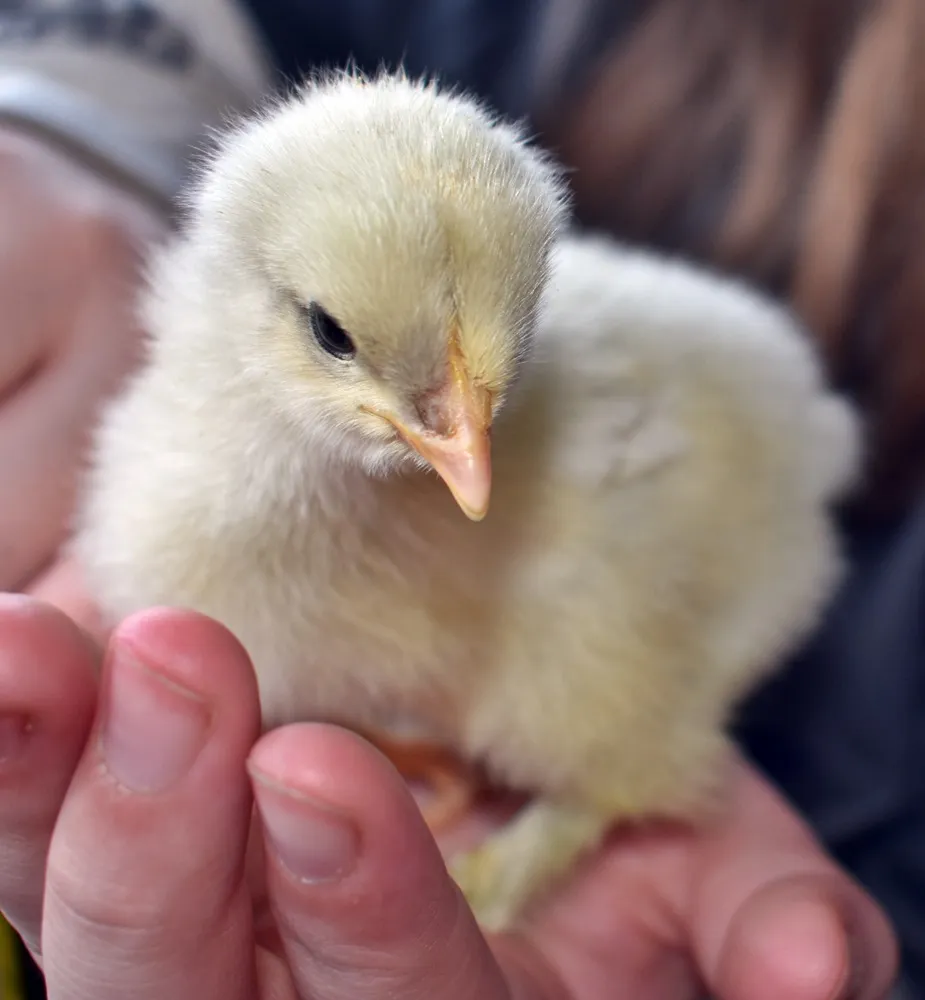
Our Chicks for 2020.
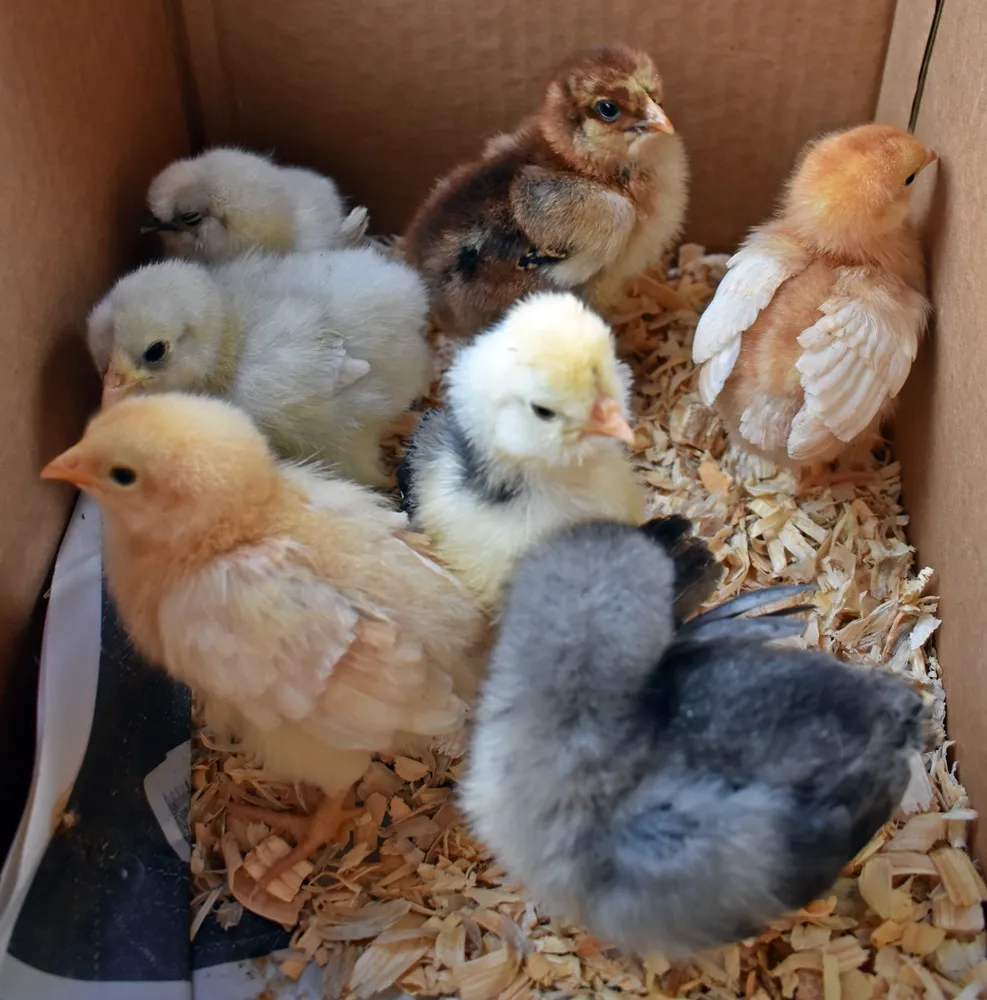
Here are the seven chicks my girls picked out. We have:
- blue ameraucana (front right)
- cinnamon queen (back right)
- partridge (?) cochin (back center)
- white silkie (back left) - sadly died on Monday.
- white cochin (left center)
- buff orpington (left front)
- mottled houdan (center)
At least five of them should be layers. The houdan and the silkie are "straight run" (not sexed), so we'll have to wait and see on those two.
A little about the breeds.
Although I have personally raised buff orpingtons and ameraucanas before, the others are new to me. But being a good 4-Her in the day, I know something about each of these breeds.
Ameraucana
I first ran into these with the "free chick" from Murray McMurray's hatchery back in the 80s. At first, they were called Araucanas which isn't quite correct as that breed is a rumpless breed out of South America. This one was crossed with something along the way to give it back its tail.
Ameraucana's are distinctive by their "muff" around their face. Unfortunately, ours was not being cooperative in the chick picture. She will grow up to look something like:
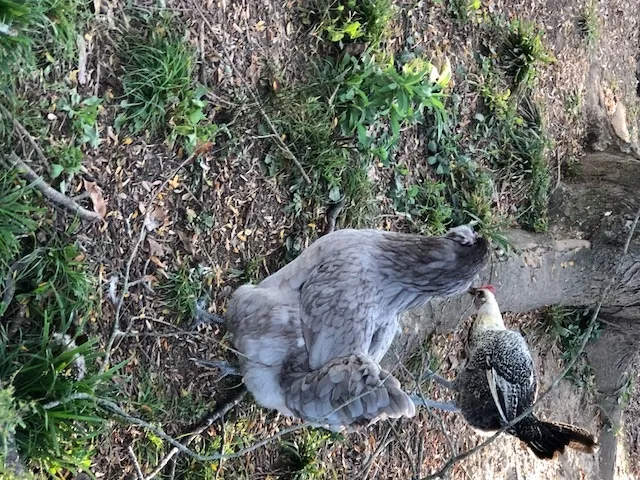
(Image from Cackle Hatchery.)
This breed is a dual purpose breed, meaning they make good meat birds and good layers. Of particular note, the ameraucana typically lays blue eggs.
You can read more about this breed on Wikipedia and The Happy Chicken Coop
It's also important to note that there's a great deal of confusion regarding Ameraucanas and "Easter Eggers" which are a hybrid (Ameraucana x anything). The names seem to be used interchangeably and it will be awhile before we know which one we really have.
Cinnamon Queen
This is what used to be called a "red sex link" chicken. (I guess they didn't like the risqué name anymore.)
The hybrid is created from a Rhode Island Red rooster and a Rhode Island White hen. The result are chicks where you can identify their gender on day one. The females are reddish and the males white.
They are properly dual purpose, the males are a decent meat bird and the hens lay well. They lay light brown eggs.
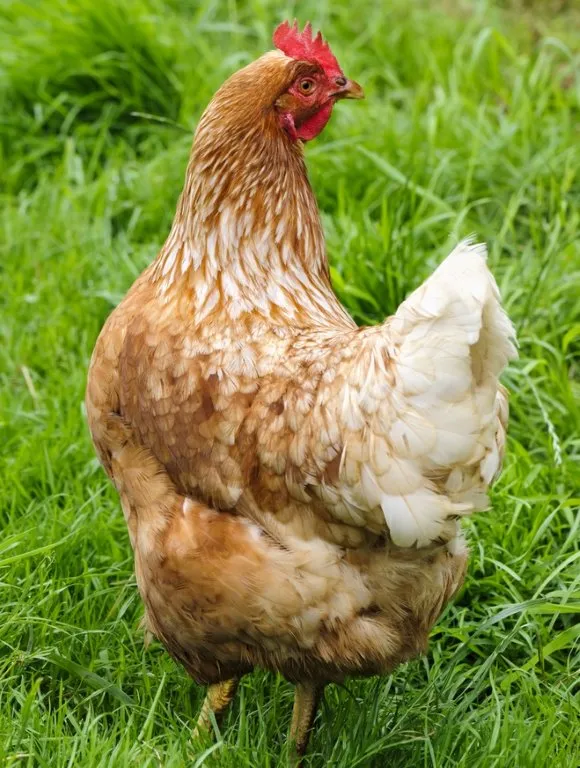
(Image from Cackle Hatchery.)
Read more about this breed at Purely Poultry and The Chick Hatchery.
Orpington
I have raised buff orpingtons several times and they're amongst my favorites. They are very fluffy and soft and have sweet temperaments. They're a dual-purpose breed, laying pale brown eggs and making fine meat birds as well.
This breed is a heritage breed and used to be considered threatened, but seems to have recovered well, particularly the Buff Orpington which is, by far, the most readily-available orpington color.
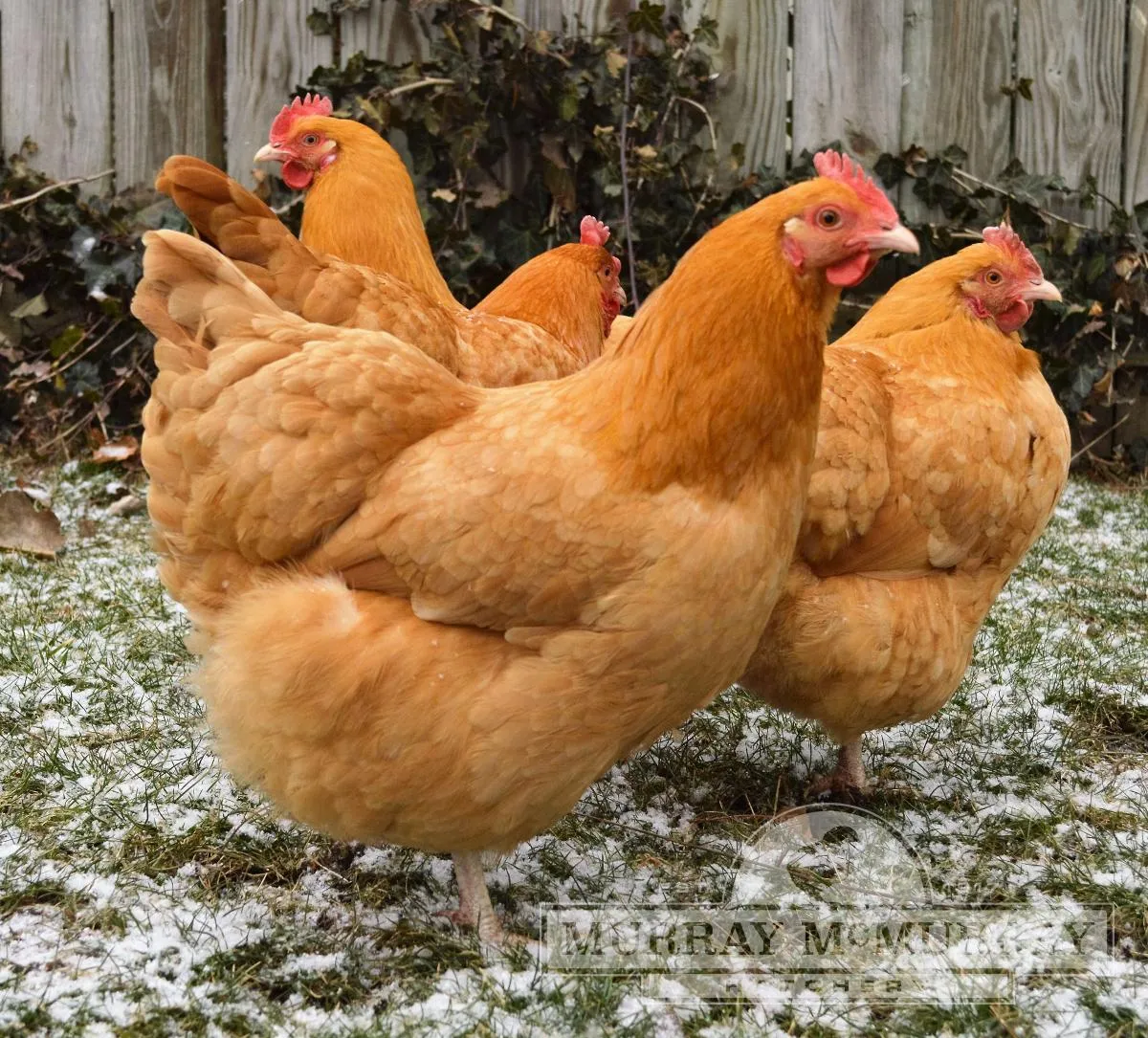
(Image from Murray McMurray Hatchery.)
Read more about this breed from The Spruce and Wikipedia.
Silkie
Here is an interesting and very sweet breed. The silkie's feathers are more like an eternal mass of down and are the softest of all breeds. They are also of gentle nature and make excellent brood hens.
This one was chosen (by us) entirely for fun, though I already told the girls that if she broods chicks for us, she'll be worth her weight in gold.
(Note: Sadly, this chick died on Monday. When I look back at the picture of the whole group, I can tell that she wasn't very well. It's hard to do much about a bird of this size. Anyway, the person who sold it to us is going to replace it, since it died so quickly.)
Other strange features of this chicken is their dark purplish or black feet and walnut-shaped comb, their feathered legs and their five-toed feet.

(Image from Cackle Hatchery.)
As you can see (unlike this chicken), sometimes the feathers around their faces are trimmed back so the bird isn't blinded!
Read more about this ancient breed at The Happy Chicken Coop and Wikipedia.
Houdan
Another interesting (and ancient) breed is the Houdan.
This breed was developed in France from other five-toed breeds. (Most breeds have four toes per foot.) It has a v-shaped comb (or butterfly-shaped) and this funky crest which makes them look rather punk.
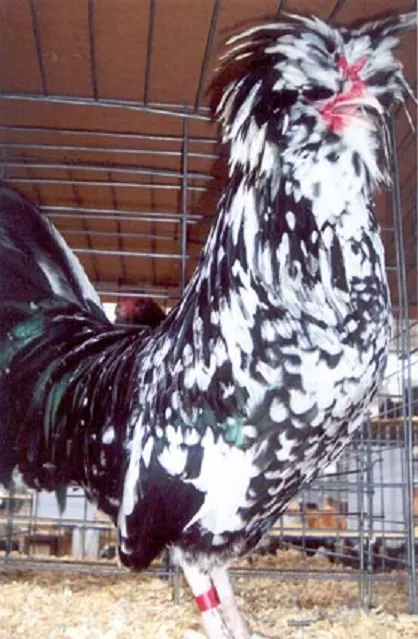
(Image from Cackle Hatchery.)

(My daughter, @emberskydragon, holding our houdan. See the beginnings of his crest on his/her head?)
This breed is great for egg laying and were historically considered an excellent table bird. Now, it's considered a "threatened" breed by the Livestock Conservancy, so it's a good breed to work with.
Read more from Livestock Conservancy and Wikipedia.
Cochin
This is another very soft-feathered breed. In fact, the roosters of this breed never develop the curved sickle feathers roosters are generally known for, instead, having a great "cushion" of feathers on their tails. They also have feathers on their legs.
Another good dual-purpose breed originally from Asia, this breed is a moderate egg-producer, decent (slow) meat producer and are also good sitters for raising more chicks.
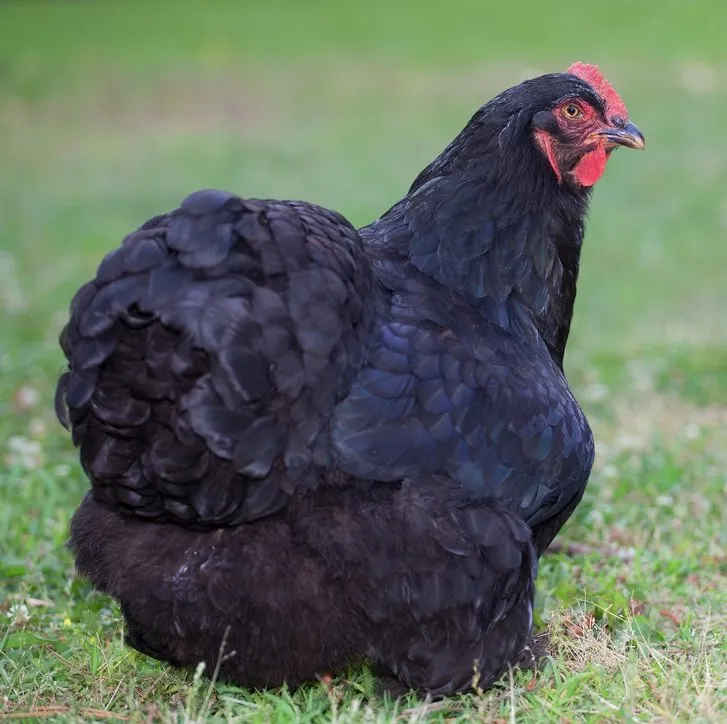
(Image from Cackle Hatchery.)
We ended up with two cochins. A (probable) partridge cochin and a white cochin.
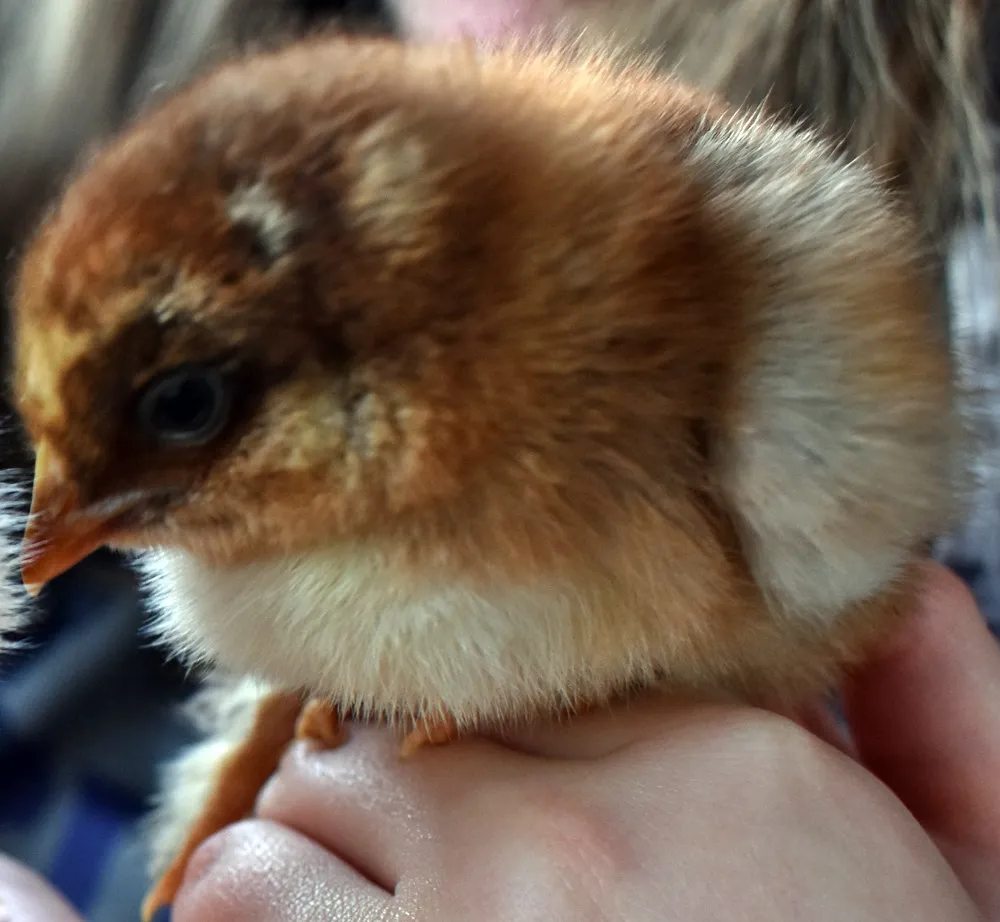
(My daughters holding the two cochin chicks. See their feathered legs?)

Read more about cochins at Morning Chores and Wikipedia.
Breed pictures used for educational purposes from Cackle Hatchery and Murray McMurray Hatchery. I've used both of these hatcheries (this time, they were all from Cackle) and I can recommend them both.
Chick photos taken in 2020 with my Nikon D7200.
Lori Svensen
author/designer at A'mara Books
photographer/graphic artist for Viking Visual
(Buy my work at RedBubble, TeePublic, and DeviantArt.)
verified author on Goodreads
find me on Twitter


